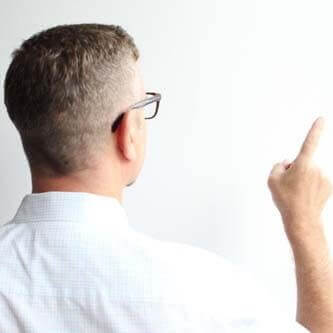The first legal trials were not trials that we would recognize. In their early forms, trials were barbaric and violent and had almost nothing to do with judging truth or culpability, they were more predicated upon divine intervention or superstition. English courts employed a form of ‘trial by combat’ known as ‘wager of battel’ soon after the Norman Conquest in 1066. Trial by combat is literally a means of deciding disputes by having two litigants or witnesses fight in a single combat; the winner is decreed ‘right’ and the loser ‘wrong.’ Essentially, wager of battel was a judicially-sanctioned duel. There is some evidence that families participated in the wager of battel against each other in groups. This form of trial was clearly of Viking and Germanic origin, and was generally used to resolve disputes between noblemen. The practice was abolished in 1819.
Equally uncivilized is ‘trial by ordeal.’ Trial by ordeal is a judicial practice by which the guilt or innocence of the accused is determined by subjecting them to a painful task. If either the task is completed without injury, or the injuries sustained are healed quickly, the accused is considered innocent. In medieval Europe, like trial by combat, it was a procedure based on the premise that God would help the innocent by performing a miracle on their behalf.
There were several manners of ordeal, each more bizarre than the next. One was ordeal by fire. This required the accused to walk a predetermined distance over hot coals or to hold a red hot iron. A variation required the accused to pluck a stone from a vat of boiling oil, or lead. Lack of injury (understandably rare) was proof of innocence. Much more common was an examination of the inevitable wound several days later by a priest; he’d decide if God was healing the wound, or if it was merely festering.
There were also ordeals of both hot and cold water. The ordeal of hot water required the accused to dip his or her hand in a kettle of boiling water. The ordeal of cold water could also be called ‘acquittal by buoyancy.’ This manner of ordeal is rightfully associated with witch-hunts and trials of the 16th and 17th century. There is a reference in the code of Hammurabi; it describes that a man accused of sorcery is to be submerged in a stream and acquitted if he survives. The ordeal of the cross was developed in continental Europe to discourage judicial dueling. In it, the litigants stand on either side of a cross with their arms raised. The first to lower their arms in exhaustion is the loser. It was later abolished to avoid ridiculing Christ.
The notion of trial by jury came much later. Danish invaders introduced a custom of making committees among the free men in English courts. This may have tempered the English to the future growth of a more formal jury system later introduced by the Normans. The English king Ethelred the Unready set up an early written code, one provision of which stated that the twelve leading minor nobles of each small district were required to swear that they would investigate crimes without a bias. Jurors began as court-appointed private detectives. Their oath was to investigate a case without bias, not to passively hear a case without bias. Jurors remained free to investigate cases on their own until the 17th century. Now, of course, jurors are strictly forbidden to learn anything about their cases from outside the courtroom.
The English King Henry the II pushed forward the notion of a jury trial, although initially its use was limited to land disputes. Henry the II also introduced what is now known as the grand jury, then known as the jury of presentment. Then, as now, the grand jury only brought accusations; it did not determine innocence or guilt. The determination of guilt was made by a petit jury, what we know call simply a jury. The number of jurors has been curiously constant for nearly a millennia twelve seems to be the magic number. Following the English tradition, American juries have usually been comprised of 12 jurors, and the jury’s verdict is usually required to be unanimous. However, in many jurisdictions, the number of jurors is often reduced to a lesser number (such as five or six) by legislative enactment, or by agreement of the litigants. Some jurisdictions also permit a verdict to be returned despite the dissent of one, two, or three jurors.
In the United States a person accused of a felony enjoys the right to a trial by jury. This right arises from the Sixth Amendment to the Constitution (which later applied to the states by virtue of the Fourteenth Amendment). The Sixth Amendment dictates that “In all criminal prosecutions, the accused shall enjoy the right to a speedy and public trial, by an impartial jury of the state and district wherein the crime shall have been committed.” Most states’ constitutions also grant the right of trial by jury in lesser criminal matters, though most have abrogated that right in offenses punishable by fine only.
Americans also enjoy the right to jury trials in many civil cases. The right to trial by jury in civil cases is guaranteed by the Seventh Amendment, which provides “In Suits at common law, where the value in controversy shall exceed twenty dollars, the right of trial by jury shall be preserved, and no fact tried by a jury shall be otherwise re-examined in any Court of the United States, than according to the rules of the common law.” The right to a jury trial in civil cases does not extend to the states, however, except when a state court is enforcing a federally created right, of which the right to trial by jury is a substantial part.
Some Related Articles

Michael Spadaccini is the author of 8 books on self-help legal matters such as, Ultimate LLC Compliance Guide: Covers All 50 States (Ultimate Series), Ultimate Book of Forming Corps, LLCs, Partnerships & Sole Proprietorships, and Ultimate Guide to Forming an LLC in Any State, Second Edition (Ultimate Series).
You can view his Amazon Author Profile Here.


Leave a Reply
Want to join the discussion?Feel free to contribute!